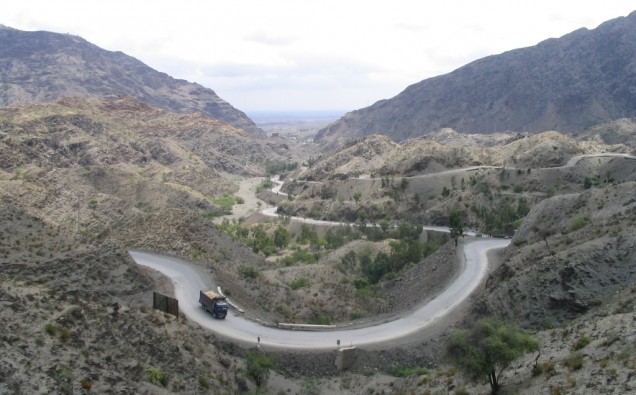
The United States, China, Pakistan and Afghanistan explored prospects for a negotiated end to the bloody Afghan conflict, as four nations discussed ways to relaunch talks between the Afghan Taliban and Kabul.
Washington believes the reconciliation process – aimed at persuading the Afghan Taliban to renounce violence and accept the country’s constitution – is the surest way to pull Afghanistan out of its permanent state of war but the peace process should be Afghan-led.
Pakistan proposed at the quadrilateral meeting that Taliban, who have shown no let-up in violence, should be offered incentives to come to the negotiating table.
The four countries with major stakes in Afghan peace are conscious of the looming ISIS or Daesh threat amid attempts by the Middle Eastern militant group to spread its network to vulnerable Afghanistan.
Regional capitals and international experts fear that if there is no peace in Afghanistan, the resulting brew of terror including al-Qaeda, ISIS and the Afghan Taliban groups, could destabilize the entire region.
Sartaj Aziz, Pakistan’s Adviser on Foreign Affairs, told the meeting in Islamabad that setting any pre-conditions or threat of the use of military force could be counterproductive.
Pakistan is seen as a critical player in any efforts for reconciliation between Taliban and the fledgling Afghan government which relies heavily on the U.S. military support to fight not just Taliban but groups like ISIS, which is trying to gain a foothold, as well as a resurgent al Qaeda seeking to reestablish safe havens in the warn-torn country.
In early July 2015, Pakistan hosted a meeting between Afghan government officials and Taliban representatives to discuss reconciliation, but the announcement of militants’ long-time leader Mullah Omar’s death in 2013 skirted the subsequent round of talks.
Mullah Akhtar Mansour who took over leadership of the militant group, has since tried to consolidate the movement amid a worrisome spike in violence in the second half of 2015.
Incentives “can persuade them to move away from using violence as tool for pursuing political goals,” Aziz said in his opening remarks, adding the primary objective of the reconciliation should be to create conditions to bring Taliban groups to the negotiating table. “Certain CBMs can play a key role in encouraging Taliban groups to join the negotiations process.
“It is, therefore, important that pre-conditions are not attached to the start of the negotiation process. This in our view will be counterproductive.”
He also voiced opposition to threats of military action before the offer of talks against “irreconcilables” – a term which referred to elements within Taliban who are opposed to peace talks.
“Distinction between reconcilable and irreconcilables and how to deal with the irreconcilables can follow once the avenues for bringing them to the talks have been exhausted.”
The U.S. Special Representative for Afghanistan and Pakistan, Ambassador Richard G. Olson attended the meeting amid rising concerns in the Pentagon over the Taliban-led insurgency which has been emboldened by withdrawal of U.S. most troops from Afghanistan, and the transition from their direct combat operations to train, advise and assist (TAA) role.
The escalation in violence in the second half of 2015 forced a review of a decision of a total withdrawal by President Obama who announced on Oct. 15 to keep thousands of troops in Afghanistan through the end of his term in 2017.
“It’s constant fighting season in Afghanistan now,” Pentagon Press Secretary Peter Cook told a Jan. 5 press briefing, referring to the spike in violence resulting in increase in Afghan forces and Taliban casualties in 2015 compared to the preceding year to that.
Between Jan. 1 and Nov. 16, there were a total of 28 high-profile attacks in Kabul, a 27 percent spike compared to the same period in 2014, according to a Pentagon report in December.
The United Nations Assistant Mission in Afghanistan (UNAMA) documented 1,592 civilian deaths and 3,329 injured as a result of suicide and other militant attacks in the first six months of the 2015.
Since the beginning of U.S. operations in Afghanistan in October, 2001, the United States has 1,836 soldiers killed in action and 20,094 wounded as of Nov. 30, 2015.
The Haqqani Network remains the greatest threat to the Afghan and foreign troops and the elevation of its leader, Siraj Haqqani, as deputy to Mullah Mansour has strengthened the group’s role in the Taliban-led insurgency.
Pakistan’s ongoing military operation, launched in June 2014, disrupted the Haqqani’s foothold in tribal region of North Waziristan along the border, but the group is still able to plan and conduct attacks, according to the Pentagon report.
In addition to Taliban militants, the ISIS Khorasan Province (IS-KP), estimated between 1,000 and 3,000 men, is also making its mark and has seized pockets of terrain from the Taliban in Nangarhar Province.
The group is said to be recruiting alienated Taliban and Taliban-linked fighters, notably the Islamic Movement of Uzbekistan, which publicly declared allegiance to IS-KP in August, 2015.
Ties between Pakistan and Afghanistan, seen a critical aspect of ensuring security and stability in Afghanistan, have come under strain after a series of high-profile attacks in Kabul in August last year, but the two countries had been able to maintain regular contacts at the highest level.
According to a joint statement issued at the end of the Quadrilateral Coordination Group, the participants underscored the immediate need for direct talks between the Afghan government and representatives of Taliban groups “in a peace process that aims to preserve Afghanistan’s unity, sovereignty and territorial integrity”.
The group would meet again on Jan. 18 in Kabul to discuss ways to advance the reconciliation process.














